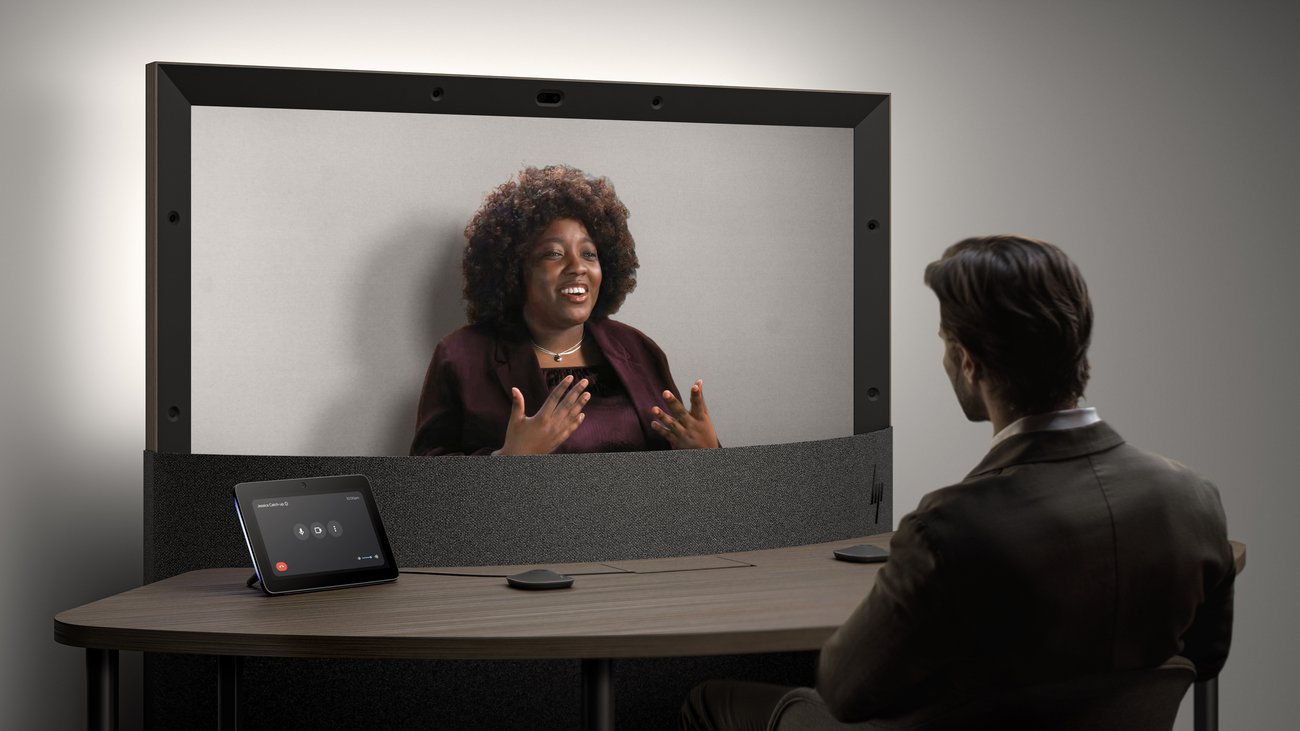Earlier this year, Google made an exciting announcement regarding Project Starline, a groundbreaking initiative aimed at revolutionizing the way distributed teams and individuals interact, especially in workplace settings. This transformative technology, developed in collaboration with HP, will be commercially available starting in 2025. Today, we’re thrilled to offer a sneak peek into the innovative product design, which has been meticulously crafted in partnership with HP.
A Glimpse into Project Starline’s Vision
Project Starline represents a significant leap forward in communication technology. The primary objective is to make remote interactions feel as natural and immersive as face-to-face conversations. This is particularly important in today’s world, where remote work and virtual meetings have become the norm.
The technology behind Project Starline uses advanced hardware and software to create a 3D representation of the person you’re speaking with. This isn’t just a flat image on a screen; it’s a highly detailed and lifelike portrayal that makes it seem as though the other person is sitting right across from you. This is achieved through a combination of high-resolution cameras, depth sensors, and sophisticated display technology.
The Design Philosophy
One of the standout features of Project Starline is its design. The device has been designed to seamlessly blend into meeting rooms, ensuring that the technology itself doesn’t distract from the interaction. The goal is to create a natural and comfortable environment where the focus is solely on the conversation and the people involved.
The design process involved extensive collaboration with HP, leveraging their expertise in creating user-friendly and aesthetically pleasing hardware. The result is a sleek and modern device that fits effortlessly into any professional setting. The user interface is intuitive and easy to navigate, ensuring that even those who are not tech-savvy can use it without any hassle.
How It Works
The core technology behind Project Starline is both fascinating and complex. Here’s a simplified explanation:
- High-Resolution Cameras and Depth Sensors: These capture a detailed 3D image of the person on the other end of the call.
- Real-Time Compression and Transmission: The captured data is compressed and transmitted in real-time, ensuring minimal lag and a smooth conversation.
- Advanced Display Technology: On the receiving end, the data is reconstructed to display a lifelike 3D image of the person. This is done using a combination of high-resolution screens and sophisticated projection techniques.
The User Experience
From a user perspective, Project Starline is designed to be as simple and straightforward as possible. You sit down in front of the device, and the other person’s 3D image appears as if they’re sitting right across from you. The natural eye contact, gestures, and body language make the interaction feel incredibly real.
This technology has the potential to transform various industries. For example, in business settings, it can facilitate more effective remote meetings and collaborations. In healthcare, it could enable more personal and empathetic telehealth consultations. The possibilities are endless.
The Road Ahead
As mentioned earlier, Project Starline will be commercially available starting in 2025. This timeline allows for further refinements and enhancements to ensure the best possible user experience. Google and HP are committed to making this technology accessible and affordable, so it can benefit as many people as possible.
Why It Matters
The importance of effective communication cannot be overstated, especially in a world where remote interactions are becoming increasingly common. Project Starline has the potential to bridge the gap between virtual and in-person communication, making remote interactions feel more personal and engaging.
Moreover, this technology could reduce the need for travel, leading to significant cost savings and a reduced carbon footprint. It aligns with the broader trend of leveraging technology to create more sustainable and efficient ways of working.
Good to Know
While Project Starline is set to revolutionize communication, it’s not the only innovation in this space. Several other companies are also exploring ways to enhance remote interactions through augmented reality (AR), virtual reality (VR), and mixed reality (MR) technologies. However, Project Starline stands out for its focus on creating lifelike 3D representations without the need for special glasses or headsets.
Industry Reactions
The announcement of Project Starline has garnered significant attention and praise from industry experts. Many see it as a game-changer for remote communication, with potential applications across various sectors. Analysts predict that the technology could set a new standard for virtual interactions, challenging other companies to innovate and improve their offerings.
Conclusion
Project Starline is a testament to the incredible advancements in communication technology. By creating lifelike 3D representations of remote participants, it promises to make virtual interactions feel as natural and engaging as in-person conversations. With its sleek design, user-friendly interface, and potential for widespread impact, Project Starline is poised to transform the way we connect and collaborate.
For more details and updates on Project Starline, you can visit the official announcement.
Stay tuned for more exciting developments as we move closer to the commercial launch of this groundbreaking technology in 2025.
For more Information, Refer to this article.


































